Today, I have invited a top dermatologist, Keira Barr, onto the show to talk about important tips for protecting your skin.
My guest is Dr. Keira Barr, MD who is a double-board certified Dermatologist and an internationally recognized author, leader, speaker and educator in her field. She believes that everyone deserves to feel comfortable in their skin—and that we all have the potential to experience it for ourselves. Dr. Barr is the Chief Wellness Officer of Resilient Health Institute (RHI) and embraces what is on the surface as well as what’s below it.
In today’s interview, Keira Barr and I discuss the major contributors to skin damage and skin cancer and specific ways you can protect your skin.
So please enjoy this interview…
To learn more about Dr. Keira Barr, go to: www.chooseresilience.com
TRANSCRIPTION:
Trevor: Hi there. I’m Dr. Trevor Cates. Welcome to the Spa Dr. Podcast. Today, I’ve invited a dermatologist on to talk about top tips for protecting your skin. My guest is Dr. Keira Barr, who is a double board certified dermatologist and an internationally recognized author, leader, speaker, and educator in her field. She believes that everyone deserves to feel comfortable in their skin and that we all have the potential to experience it for ourselves.
Dr. Barr is the chief wellness officer of Resilient Health Institute and embraces what is on the surface as well as what is below it. My kind of dermatologist, right? In today’s interview, we discuss the major contributors to skin damage and skin cancer and specific ways you can protect your skin. Please enjoy this interview.
Keira, it’s so great to have you on my podcast.
Keira: Well, thank you. I’m looking forward to spending some time with you.
Trevor: So great to talk to a dermatologist that has more of an integrative approach. Sometimes people say to me, “Do you have a thing against dermatologists?” I’m like, “No, no, not at all.” I think dermatologists are great, especially ones like you. I’m excited to interview you today and talk about … we’ll talk about how to protect the skin, and we’re going to talk about different layers of that and what that means. First of all, I’m so excited to be interviewing you. It’s so great to have an integrative dermatologist on. We’ve had one on before and it’s nice to have another.
Keira: Yeah, yeah. Well, thank you. Yeah, I think as I’ve progressed in my career, I realized that I think that we need a lot more of a comprehensive approach. What we’re taught in school is there’s fluctuations, waves of diets involved and then someone looks down upon it and so then it gets buried in the literature. It’s all important and I think in order to get the best outcomes, we need to look at the whole spectrum.
Trevor: Absolutely. I really appreciate that outlook and that viewpoint. Let’s start by talking about what contributes to skin cancer, because I think there’s a lot of talk on how you need to protect your skin from the sun. That’s such a focus. Sometimes it’s the only focus on skin cancer. Some people think that the only way you protect against skin cancer is to use sunscreen or to protect your body from the sun.
Keira: Right.
Trevor: But you have some different thoughts on this, right?
Keira: I do, I do. In the traditional, what we’re taught and what the Skin Cancer Foundation, if you go to their website, it’s an amazing resource, but the top five things that are recommended are things that most people heard about: avoiding the sun between peak hours of 10:00 and 2:00, or even 4:00, when the UV index is high. Seeking shade, wearing clothing ideally that has a UPF rating in fact. Avoiding the sun, shade, some protective clothing, sunscreen, and I always like to say that sunscreen should be your last line of defense, not your first, because most people don’t put on enough sunscreen. They put on maybe a quarter to a half of what they need. They’re really not getting that sun protection factor that’s on the bottle anyway. You need a more comprehensive strategy.
That’s where things that we’re doing every day, what we’re eating especially, what we’re putting in our body, which I know is huge for you. Clean skin from within, that’s the crux of it. You’ve got to feed the body from the inside out in order to maximize your protection. Sleep is another huge one and we can talk a little bit about some of the exciting research that’s come out with that. Exercise, we know that it has so many positive benefits, but it’s particularly for boosting our immune system and cancers caused by immune suppression and really, that idea of stress. Your stress perception and the … it has on our body and our body’s ability to fight off insults like UV radiation.
I know there’s a mouthful, but that’s like diving into all the things that most dermatologists are not talking about that is something that is just so important to our everyday overall health as well.
Trevor: It’s not just the sun that’s an issue. There are a lot of different factors that play a role. What are some of the big factors besides sun? That’s what everybody talks about is sun. What are the other factors? You mentioned sleep for example. I’m sure people are like, “Sleep and protecting me against skin cancer? What the heck does that mean?”
Keira: Right, right, right. It’s really interesting. I don’t think most people are aware that melatonin is one of the body’s most potent endogenous antioxidants, right? We don’t think about that. We think of you take a melatonin pill, it might help you sleep, but the role that it plays in our overall health is important. We have our circadian rhythm but your skin has its own rhythm as well. Recent literature has shown that melatonin has been used in the treatment of both topically and systemically for managing melanoma. Part of that has to do with the fact that melatonin has its own protective benefits against sun. It modulates the impact on the, I guess, the insults that occur, the oxidative stress that occurs, and helps to repair mitochondrial damage actually that’s inflicted by UV exposure.
Sleep is generated. Sleep helps produce the melatonin that we need and so that’s the role that we play. Don’t be surprised hopefully if your dermatologist prescribes sleep as your next action step.
Trevor: That’ll be interesting. I’d love to hear dermatologists talk more about that. That’s great.
Keira: Yeah. [crosstalk 00:06:30]
Trevor: Have a sleep specialist in your office, right?
Keira: Right, right. It’s so powerful and they’re really looking at formulating creams and other things. It’s like, “Okay, how about we just work on our own sleep hygiene?” We all walk around with [inaudible 00:06:46] glasses and have our eye mask. I know I do. It’s not the most attractive, but earplugs, eye mask, whatever you can do, totally dark room to maximize your sleep so that you can generate your melatonin that’s going to be able to support you when you have insults from sun exposure, which is we can’t avoid it.
Trevor: Right.
Keira: We can’t avoid it. Yeah.
Trevor: I had Dr. Michael Bruce on talking about sleep tips. That’s a podcast, somebody’s trying to figure out, “Okay, well, how am I going to sleep better?” Check out that podcast, just as a little side note. What do you think about melatonin as supplements?
Keira: I think there’s definitely, especially if you are not on the good path of sleep or you’re struggling for … there are many reasons why, blood sugar imbalance and things like that, hormonal things that may not be in check. I think that melatonin supplementation may especially be a good consideration, but there’s various titration of doses and so you’re going to have to play with it. Some people don’t do well at all with the melatonin, so just like anything else, it may have to be a trial and error and see what works.
Trevor: Primarily, I want to try and get a good night’s sleep. If you’re struggling with that, then maybe a melatonin supplement. Then also topical melatonin, where do people find topical melatonin? Is that something that has to be from a compounding pharmacy or are there companies making that now?
Keira: This is just recent work in the literature, so they were looking at 0.5%, 5% and 12 and a half percent and there was the 12 and a half percent topical melatonin that had the significant results. There’s still more research to be done, so I’m not sure if it’s commercially available at this point. I’ll keep my eye out for that and keep you posted.
Trevor: All right. I think compounding pharmacists probably make that up pretty easily. I was definitely going to talk to mine in Park City, see if she’d be willing to make that up for some of my patients. That’s great. Okay, what else? What are the other things that really make us more at higher risk for skin cancer?
Keira: I think that we talk about is our skin type, right, so there’s something called the Fitzpatrick’s score, 1 being the most fair, 6 being the darkest skin. Those individuals like myself, I have dark hair and hazel eyes but I’m a Fitzpatrick 2, maybe a 3, because my dad is a redhead and so I have fair skin and I burn.
What always burn likely don’t tan. Two, you’re going to burn, yay, and maybe get some tan. Three, you’re going to burn first then you’re going to tan. Four, less likely to burn and so on and so on. Your skin type is going to make you more … That’s one factor that’s important.
The second would be medications that you might be on. There are especially antibiotics can make you more photosensitive. There are blood pressure medications as well. Knowing what’s in your medicine cabinet, what you’re taking is important. There are also certain fragrances. Oil of bergamot is known to be a photosensitizing agent. If you’re wearing a fragrance that the sun hits it, it can make you more sun sensitive. Same thing with citrus, there’s something called phytophotodermatitis where the chemicals that are in the citrus fruit they react with the sun and they can cause sensitivity and you can actually burn. Those are some of the major things, foods, medications and your genetics that make you more susceptible.
Trevor: What I know with the essential oils there are some that can be modified. Bergamot oil can be modified so it doesn’t have that photosensitizing effect. We do that with my skin care line and I do tell people generally like the DIY skin care, sometimes it has citrus or papaya or some of these other things that can be photosensitizing and I generally tell people just do this at night or if they know they’re not going to be going out in the sun then that’s okay to use those. Otherwise, maybe skip some of those ingredients.
Keira: Mmhmm (affirmative), yeah. One of the things that we do use at night for anti-aging, one of the biggest components is retinaldehydes, vitamin A which because of its powerful effect of skin cell turnover, exfoliation and it really does help with collagen stimulation and for anti-aging, it’s a powerhouse. That being said, it’s not photo stable so it will break down in the sunlight and it also makes you more sensitive to the sun.
I think there’s been a lot of bad rep about Retin-A or retinols and their affiliation or association linked to cancer. We actually use them for cancer preventative means but we use them at night and then we tell the patients to wear sunscreen and use other sun-protective measures like hats and [inaudible 00:12:22] so that they shield their skin that’s now a little bit more sensitive and vulnerable to the sun’s effects.
Trevor: Right. Okay. I agree. Thanks for touching on that because it’s a good point. A lot of people are using those products and so it’s important to just use this at night and protect our skin from the sun. Yeah.
Trevor: Let’s talk about SPF.
Keira: Okay.
Trevor: Because I think that there’re some confusions around and I think people for the most part feel like they know all about SPF but is there anything you feel like are myths out there or things people don’t know about SPF?
Keira: Yeah, well I think it’s important that SPF, no sunscreen can 100% protect you from the sun’s rays and I think people get a false sense of security when they wear sunscreen. They’re like, “I’m wearing sunscreen. I’m good to go.” But like I had mentioned earlier most people aren’t using enough. They’re using about a quarter to maybe half of what they should be using.
An SPF of 15 blocks out 93% of UVB rays. Now again, SPF is only a measurement of the UVB rays, which are the burning rays. We also are exposed to the UVA rays, which are the aging rays which come through window glass that don’t vary throughout the year whereas UVB rays, they will. They fluctuate seasonally.
If you’re wearing sunscreen and you’re not getting burned, that doesn’t mean that you’re not getting damaged by the sun and UVA has been shown to be a big factor in tumor initiation as well as tumor promotion. It does have a role in producing skin cancer.
An SPF of 15 gives you 93% blockage from UVB rays, SPF of 30 gives you 97% and SPF of 50 gives you 98% blockage from UVB rays. Above 50 you’re really not getting benefit. That’s where the recommendation and in Europe, there are things that are SPF of 100 but they’re really not giving you more and sometimes they’re more expensive. I would say between 30 and 50 is appropriate but you have to use enough. I know that for your face and body, not everyone realizes that two tablespoons, like a shot glass worth, is what you need for your whole body, right? It’s going to be a lot and a nickel size amount just for your face alone. Imagine the majority of people aren’t using that so they’re not getting the full SPF.
If you ask a family of four who’s at the beach all day long, how many bottles of sunscreen did they go through? They look at you like what? We still have half the bottle. If each family of four, each person uses an ounce and you’re out there for two hours, half that bottle should already be gone. After two hours, the whole family should be reapplying. By four hours, that bottle of sunscreen should ideally be empty, right? But it’s usually not. It’s usually thrown back into the bag and maybe even available for next summer.
Trevor: Absolutely. Then I usually recommend people using a zinc oxide based and trying to stay away from the sprays.
Keira: Yeah. I agree with you.
Trevor: Yeah.
Keira: Yeah, the issue with the sprays especially if you have young kids and they’re jumping all around, sprays can come in handy or men on their head but the important thing is if you do use sprays: number one, really don’t try to inhale this stuff; number two, you still have to rub it in. Because if you spray it on, you see the drips so you’re not getting full coverage. You really got to massage that in to make sure all your body parts are covered and I know that majority of people they’re not doing, they’re like spray it and then all the mist goes around. They barely have any on them, right?
That’s another thing to keep in mind but to your point about the ingredients, I 100% am using the mineral sunscreens, the zinc oxide, some have titanium dioxide as well because I, personally, I have sensitive skin and I know for kids and for others who have sensitive skin, that’s what I would recommend. The avobenzone is one of the number one causes of allergic contact dermatitis. That also goes by the name of PARSOL 1789. Those are ingredients that if you are prone to sensitive skin issues, I would avoid it.
Trevor: Yeah, absolutely. We’re talking a lot about how to protect the skin from the sun but I also want to mention that sun is not all bad. We do get vitamin D from sun exposure. I mean I generally tell people just be particularly careful with your face and the tops of your hands. This is the most important spots because when we’re driving our car, the tops of our hands get a lot of the, well, I guess more UVA rays from that.
Keira: Right.
Trevor: Then also just being exposed most of the time is our face and that’s the part that gets the most exposure. Any other tips that you have for people?
Keira: Yeah, I mean I think to your point it is vital. We need the sun, right? We need it but in order for vitamin D production, the average person, it’s going to vary based on your skin type. Certainly, individuals with darker skin they’re going to be at a disadvantage in terms of being able to generate probably the amount of vitamin D depending on their geographic location. The sun isn’t necessarily turning on their vitamin D machinery as well.
Depending on where you live, being outdoors for 15 minutes or so unprotected to a certain degree. More is not more and just another thing about vitamin D in terms of research, they’ve been … It’s really interesting that SNPs in vitamin D receptors have been shown so low vitamin D in addition to having these defects and the vitamin D receptors have been linked to increased risk of non-melanoma skin cancer.
Vitamin D supplementation, even if you do get time outdoors, vitamin D supplementation most likely is necessary for protection against skin cancer as well as we know for so many other health functions and other types of cancer. I got a little sidetracked there.
Trevor: No, no, I think that is the thing you’re talking about sunblock and protecting and then you go to vitamin D and it’s like a different conversation but it’s really about balance and getting the right amount.
I usually tell people, really, you don’t need a lot of sun exposure to get vitamin D. Again, like you said, it varies based upon your skin tone, where you live, the time of the year, all these kinds of things but it’s not like … Yeah, like you said, you don’t need to get out in the sun like if you go out for hours you’re going to get more vitamin D. Really, all they need a few times a week, 15 to 30 minutes, right?
Keira: Mmhmm (affirmative), absolutely, but for your own peace of mind and your mood elevation, all those things, being outdoors and getting that exposure is so important. It is so important. You just want to use your protection and be mindful after that. Yeah.
Trevor: Yeah, I live in Park City, Utah. We love to get outdoors and enjoy what we have to offer here, the skiing and the mountain biking and the wake surfing and the lake and stuff like that. We just try and do our best to be mindful of that in the time of day and amount of hours and that sort of thing. We do what we can, right?
Keira: That’s exactly it. I mean we’re not … There is no such thing as perfection. We’re just looking to have an awareness so that we can protect ourselves.
As a kid, I did it and part of that was I was made fun for what was on my skin. I had two birthmarks that kids made fun of. I discovered that getting a tan, those spots faded into the background. They became almost invisible.
I took every opportunity that I could to get burned and tanned as many times as I could to mask these spots. Unfortunately, as a dermatologist I became my own worst nightmare. I mean I am covered with literally hundreds of moles. Many of which have been biopsied. A lot of them had been abnormal.
As a dermatopathologist, I study the skin on the surface as well as what’s below it. I had to diagnose myself with a melanoma. I just don’t want that for anybody else. I don’t want that experience and that’s why feel it’s so important to share this information because skin cancer is the most prevalent cancer in our country. It is among the most preventable but it’s the most ignored because we take our skin for granted, right? It’s just there. We don’t necessarily think about protecting it but we need to. We need to so that it can serve us for our entire lifetime.
Trevor: Absolutely. Absolutely.
Keira: Yeah.
Trevor: Depending on the type of skin cancer, it can metastasize so then it’s just not just about your skin. It’s spreading throughout your body. Be mindful of that. Let’s talk about when to see a dermatologist? What signs to look for, early morning signs? Yeah, definitely. It’s stuff that people ask me all the time.
Keira: Yeah, when to see a dermatologist. Honestly, when in doubt, check it out. We’re always looking for what we call the ugly duckling. Really, it’s important to get familiar with your own skin and I always say pick a day, usually the date of your birthday because it’s easy to remember and before you get in the shower you’re already undressed, check out your birthday suit and look for any uninvited guests.
Really, for me, because I have so many, I’m looking for patterns. I’m looking for something that’s going to stand out from the crowd. I’ve got dozens of moles but they’re all uniformly brown. You’re looking for uniformity in color. We talked about the ABCDE so we’ll go through that. Things that are asymmetric. If you look at something on your skin and you can’t cut it down the middle and have it be the same on both sides, pay attention to that. If it doesn’t have nice sharp borders with jagged fuzzy edges, that may be another one to get checked out.
Color, so we like things to be uniform in color. Now, I have what I call a signature nevus where it’s uniformly brown but it has a dot in it and I’ve got dozens that are just like that. For me, it maybe abnormal but it’s my abnormally normal type of nevi, right? We’re looking for patterns. Things that are multiple colors, black, red, brown, that’s another one sign to get checked out for.
Diameter. This one is a little bit more challenging because we always used to say that smaller than a pencil eraser or like 5 millimeters, which is tiny but I can tell you that I’ve seen melanomas that are like 1 millimeter. Diameter is a softer kind of weaker signpost.
E is evolution. A spot that you may have had that is changing over time is one to get checked out as well as a brand new spot that may come out that doesn’t look like any of your others. That’s where that ugly duckling concept comes in. The spot that stands out from the crowd, the uninvited guest on your suit, it just doesn’t fit in with anybody else. That’s the one you get checked out.
The other thing especially with regards to non-melanoma skin cancer, which is your basal cells and your squamous cells, and a few others but there are two major types, basal cell and squamous cell. They can look like sores that don’t heal. [inaudible 00:25:28] on the upper half of the body would probably two to three weeks. If you’ve got a sore that’s not healing and it’s progressing past that, keep an eye on it, maybe get it checked out. Below the waist, blood flow isn’t … For many people circulation, it takes longer for wounds below the waist to heal especially in the foot and ankle, so maybe five or six weeks but past that, sores that aren’t healing is a self-call but something to be mindful of and maybe get checked out.
Other things, pain and itching in a particular spot. We’ve had melanomas that you’ve got a lot of nerve receptors in your skin. Anything kind of out of the realm of your ordinary, it’s always good to get checked out. At a minimum, once a year to get checked out. If you’re had a history of skin cancer, well then we’re probably seeing you every three to six months for at least the first two years because it’s within the first two years that recurrence of skin cancer is most common.
Trevor: Okay, to reiterate, even if you don’t …
Keira: Yeah, that’s a lot.
Trevor: Sorry, I know, but you’ve said a lot of great things there but just this one point. To reiterate, if you don’t even have any signs that you’re concerned about, you still should go on once a year. I just want to make sure-
Keira: Yeah, I think it’s valuable. Ideally, you’re getting an overall wellness check by your clinician to have them check your skin because your skin is an incredible messenger. Your skin is truly a window to and a reflection of your overall state of health.
I mean, I can’t tell you how many times we’ve diagnosed breast cancer or renal cancer, especially renal cell carcinoma loves to metastasize to the scalp and unfortunately, I’ve had a displeasure of having to both clinically and microscopically give patients a diagnosis of a metastatic internal malignancy because of what was on their skin.
You may think it’s just a bump. Melanoma can be amelanotic meaning it can be pink, it can be something that isn’t brown, what you think of typical. Having a second set of eyes on your skin, looking at your eyes and your oral mucosa, recruit your hairstylist, recruit your ophthalmologist, your dentist, your OB/GYN. Skin everywhere, just getting a second set of eyes, you may find something, bring something to your attention that you weren’t aware of that needs attention potentially. Yeah.
Trevor: I’m glad you brought that up too because when we talk about skin, it’s not just what we typically see on our face or arms, legs, it’s also our lips, right? We don’t check because cancer can occur on the lips. It can happen in the mouth, which is different. In the scalp, a lot of times people don’t, I mean I’m always worried about my scalp because I’ve got a part here, I get burned so easily in the top of my head. If I don’t put sunblock right here, I will get burns there. When I go to the dermatologist, I’m sure to have them check my scalp too.
Keira: Yeah and you should insist on it. I think I did a melanoma fellowship and residency and so it was just no question. We were looking in every nook and cranny, every crevice that I definitely have had patients come to me saying, “Ooh, no one’s ever looked between my toes before. No one’s looked at me like that.”
It’s like insist at every inch of your body and especially when you’re doing your self-examination. Many people aren’t necessarily comfortable with the idea of checking themselves out but get a mirror and check the perineum, the genitalia, your buttocks. You’ve got to check it out because melanoma, especially, it doesn’t care. It can occur where the sun doesn’t shine and that’s where we know that it’s not just the sun that is contributing.
There are genetic links here, especially between pancreatic cancer and melanoma, there’s a genetic link. Check everything. Just check it.
Trevor: Check everything. It’s not like you have to do this everybody, people. We’re talking about like once, what, you said once in-
Keira: Once a month.
Trevor: Yeah. Okay.
Keira: Once a month on yourself. [inaudible 00:29:45], you’re already naked. You’re like, hey, just check yourself out but once a year.
Trevor: Yeah, it’s so great to know your body because that’s … When you go into your doctor, they’re going to ask you how long have you had this and you can’t say, “Well, I don’t know because I only checked my body, like I never looked at that area or body part. I don’t know my body” then it’s like less information that the doctor is going to have to be able to help you. If you know exactly when it showed up, that’s going to be so valuable and being able to help you with addressing whatever might be going on, right?
Keira: Absolutely, absolutely. A lot of times patients have come in, they’ve found something. It’s similar with stories you hear about breast cancer. They found a lump. If you’re not checking, then you know your body better than anyone or you should because a lot of patients will come in and you’re like, “I’m not really sure about this.” I always would say, there are two reasons to take something off to biopsy it. It bothers you or it bothers me and if it bothers you even though it doesn’t bother me and you’re okay with a biopsy scar, let’s take it off because I can’t even tell you, especially as a dermatopathologist, I am humbled all the time by melanoma.
It doesn’t follow the textbooks a lot of times and that’s not to scare anyone listening but it’s important that like if something bothers you, be an advocate for yourself. Insist that it comes off, it’s growing, it’s changing, those are always the buzzwords to get into your dermatologist sooner when they have a wait list. There’s this growing changing spot.
That way, you have, you can get objective data. You can see it’s red underneath the microscope, you know what it is and you can deal with it or it could very well just be nothing. One of these benign thickenings of the top layer of the skin or something like that.
Trevor: Yeah, yeah. Okay. Perfect. Thank you. How does one go about finding a good dermatologist?
Keira: That’s a great question. Word of mouth would always … I think, is always the best way, right? You ask your friends and family who do you go to? Who do you feel comfortable with?
Personally, that’s always how I found my dermatologist and I also know who they’ve trained with. I guess I have an insight scoop I know what their philosophy is. I know kind of the language so to speak. The American Academy of Dermatology has on their website, aad.org, and you’ll find a tab that says find a dermatologist and you can find one in your area. You want to make sure that they are board certified and that they’re current with their board certification and depending on what your needs are, right?
If you’re looking for medical derm and you have psoriasis, for instance, you want to maybe research someone in the area who treats psoriasis on a regular basis. If they’re doing cosmetics and you’re interested in a cosmetic procedure, how many of them did they do? How long have they been doing it? Just really doing your research as you would for anything else but I always recommend asking your friends and family that you trust of a good experience because we’re all humans. Just because you’re a doctor doesn’t mean that you don’t … [inaudible 00:33:21] matters, I’ll tell you that.
I actually did not go back to a dermatologist because she made me feel so uncomfortable. You just have to find the right fit but the aad.org is a great resource if you’re looking for a dermatologist in your area.
Trevor: Okay. Okay, cool. Thank you for sharing that.
Keira: Yeah.
Trevor: The next thing we want to talk about is the relationship between the brain and skin and the HPA access. This is a really interesting thing and you and I are talking about it but before we start the interview and I definitely want you to share this connection with everybody.
Keira: Yeah, what’s interesting is that when we think about the HPA access we think about it’s central, it’s the brain and it sends the signals from the hypothalamus to the pituitary, to the adrenals and then sets off the whole hormone cascade.
Research has shown that the skin actually has its own HPA access. Yes, there are signals, especially with regards to stress, the brain triggers the cascade and so the skin becomes not only a target for but it also is a producer of its own stress hormones.
When we are stressed, there’s a reason why psoriasis gets exacerbated, why you break out in hives, why your acne may get worse, because within the skin it’s creating the corticotropin-releasing hormone creating cortisol which it’s stimulating your oil glands to produce oil which is going to trigger acne [inaudible 00:35:08]. It’s going to degranulate your mast cells and release histamine and cause a flare of hives or alter the permeability barrier of your skin.
Those individuals who already have sensitive skin and a tendency towards eczema, it’s going to make your skin much more vulnerable to allergens or even infection. Yeah, it’s amazing that our skin, again, it’s our largest organ and I think most of us, including myself for the majority of my life, before I became a dermatologist and even then I didn’t realize the power that this magnificent machinery that our skin actually is. We just take it for granted but the skin is incredible. It is responsible for a lot of the stress signaling as well as the immune system response directly within the skin itself.
Trevor: I think that’s so fascinating and we’re learning more and more about the skin. This aspect, the skin microbiome, all these different things and when you’re talking about the skin also has its own stress mechanism and cortisol. I do find that the adaptogenic herbs that we use internally to help us with our adrenal function to help with stress, some of those actually work really well on the skin too for people that tend to get, what we all call stressed skin, like our inflammatory skin conditions, things like rhodiola, ashwagandha, finding that those kind of adaptogenic herbs are great to use topically.
Keira: See, that’s interesting. I have not tried that. I’d only been taking them by mouth. That is great to know.
Trevor: We use some of those on my skin care line just because of the topical effect that they can have. Now, it actually makes even more scientific sense of why they might be effective.
Keira: That’s right, I mean the receptors within the skin, they’re going to absorb that right up and bring the information down. Not only does it, there’s the HPA access but there’s also your body’s ability to create epinephrine and norepinephrine within the skin itself. That whole fight or flight response, your body can sense that and generate that as well, especially if your products that are known to soothe or suppress the stress response can be incredibly powerful on the skin surface.
Trevor: Yeah, and then there’s androgen activity in the skin too. There’s a lot going on in the skin that people don’t even know about.
Keira: Right. I know. The skin is an amazing thing. I think the more we learn about it, but it is, it’s pretty amazing and it is resilient but you do need to nourish it and take care of it and nourishing it is … There’s many layers to that, right. It’s what you put on your skin and products like yours that are clean, that are well-researched and you want to read all your labels. You want to make sure that you’re not putting things on your skin that could irritate it, aggravate it, or your skin is absorbing a lot of the materials that you’re putting on it. You want to make sure that they’re not harmful to your overall health as well.
Then you want to feed it from within. That’s kind of … in terms of good nutrition because our body is we have our supply of antioxidants and the sun is a stressor. We were talking about the sun exposure before and your body has the ability to combat some of that but you do reach a tipping point where if it’s overwhelmed, you’ve used up your body’s ability to … the reserves, that’s when the DNA damage can’t be repaired. Mutations occur and that sets you on the pathway towards skin cancer but you can supplement your body’s antioxidant sources through foods and there are supplementations that we can take but really, through whole foods. It’s really important to eat the rainbow and eat foods that are high in antioxidants.
Trevor: Absolutely. Great. All right. Well, Keira, you and I could keep geeking out on the skin all day, right?
Keira: Right.
Trevor: Why don’t you tell everybody how they can find out more about you?
Keira: Yes, the name that we’re under is Resilient Health Institute and the website is chooseresilience.com and we’re on Instagram @resiliencyblueprint.
Trevor: Okay, perfect. All right.
Keira: Yeah.
Trevor: Well, I’ve really enjoyed having you on today and interviewing you.
Keira: Thank you.
Trevor: Lots of great valuable information and keep up all the great work you’re doing.
Keira: Well, thank you. To you as well, I really enjoyed it.
Trevor: I hope you enjoyed this interview today with Dr. Keira Barr. We’ve got some great information on how to protect your skin. To learn more about Dr. Barr, you can go to thespadr.com, go to the podcast page with her interview and you’ll find all the information and links there. We also transcribe the podcast. You can get that there as well.
While you’re there, I invite you join the Spa Dr. community so you don’t miss our upcoming shows and information. You can also subscribe to the podcast on iTunes and get the audio and the video versions there, and if you haven’t done so already, I highly recommend you get your own customized skin profile at theskinquiz.com. It’s free. It takes just a few moments and you’ll get great information on what your skin is trying to tell you about your health and what you could you do about it. Just go to theskinquiz.com.
Also, I invite you to join me on social media, on Facebook, Twitter, Pinterest, Instagram, YouTube, and join the conversation. I’ll see you next time on The Spa Dr. podcast.
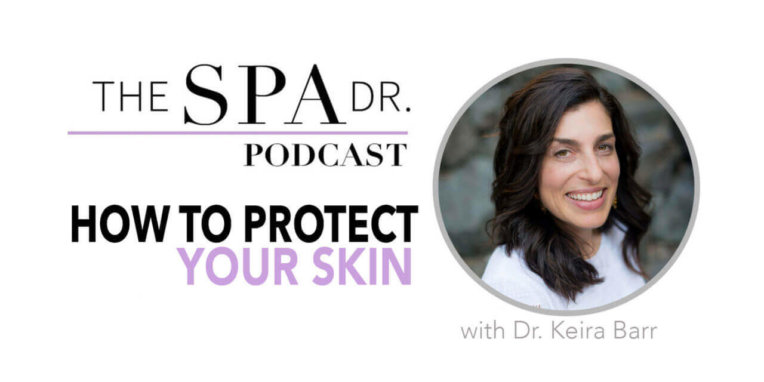
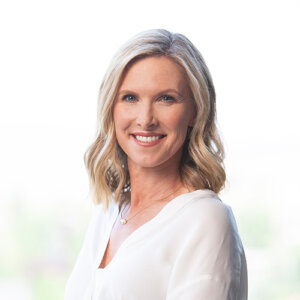
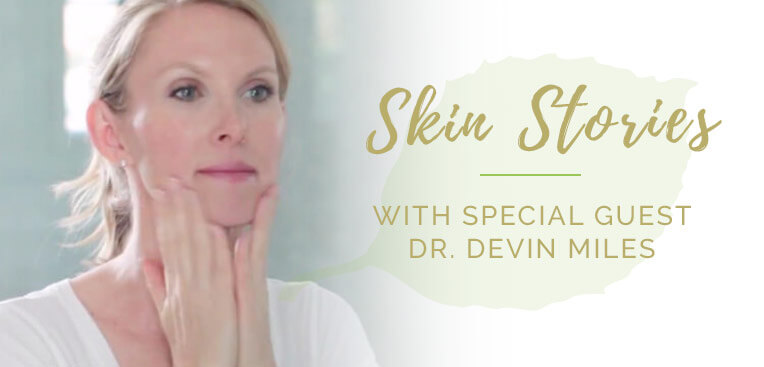
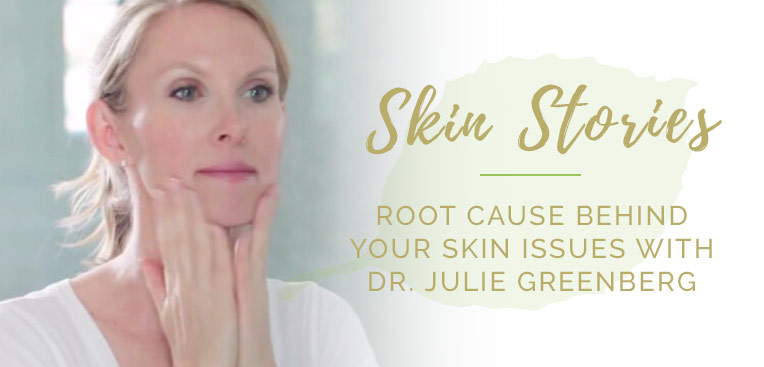

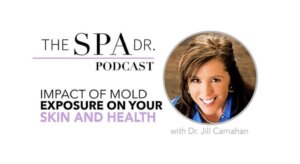
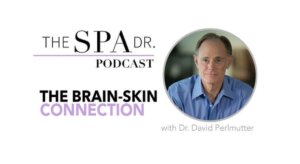

Reader Interactions